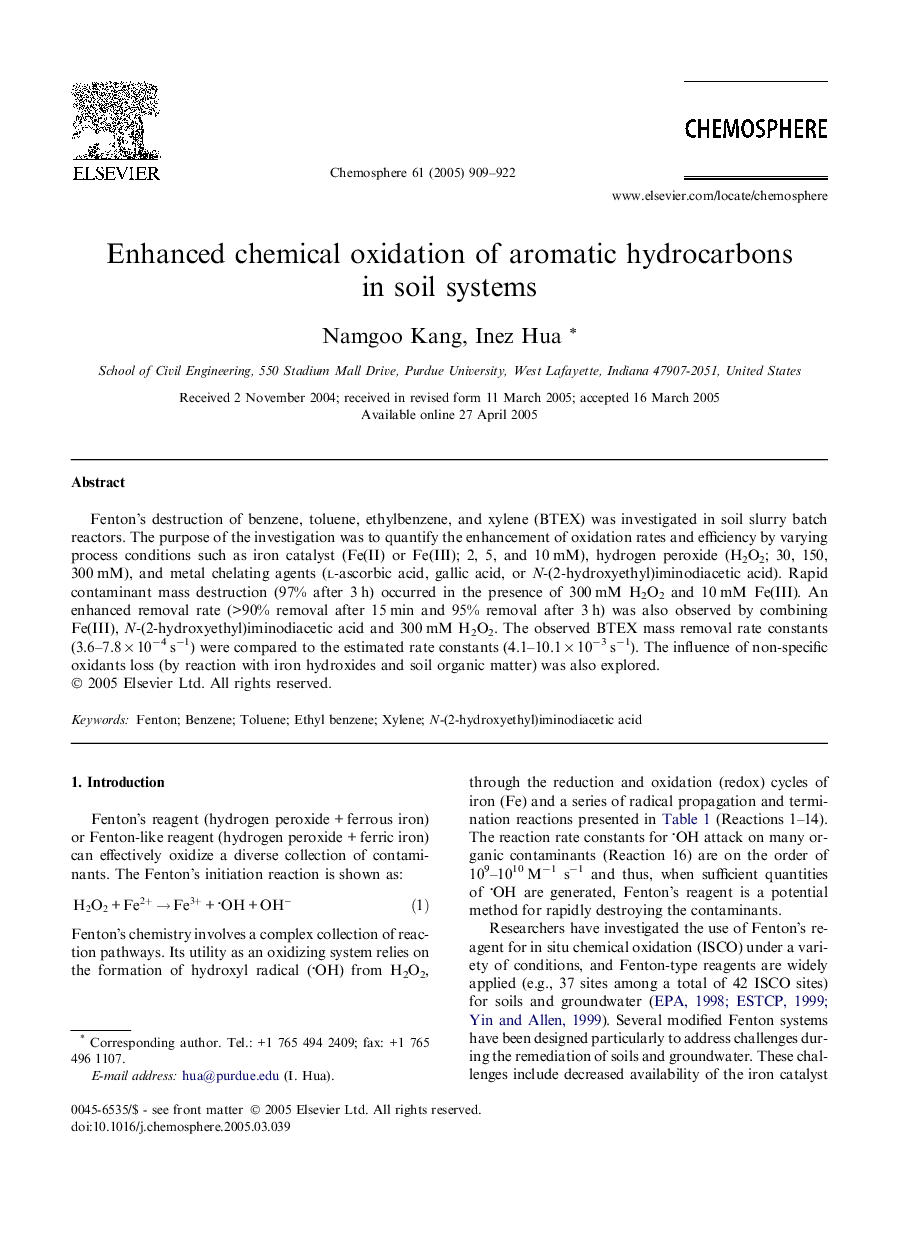| Article ID | Journal | Published Year | Pages | File Type |
|---|---|---|---|---|
| 9451540 | Chemosphere | 2005 | 14 Pages |
Abstract
Fenton's destruction of benzene, toluene, ethylbenzene, and xylene (BTEX) was investigated in soil slurry batch reactors. The purpose of the investigation was to quantify the enhancement of oxidation rates and efficiency by varying process conditions such as iron catalyst (Fe(II) or Fe(III); 2, 5, and 10Â mM), hydrogen peroxide (H2O2; 30, 150, 300Â mM), and metal chelating agents (l-ascorbic acid, gallic acid, or N-(2-hydroxyethyl)iminodiacetic acid). Rapid contaminant mass destruction (97% after 3Â h) occurred in the presence of 300Â mM H2O2 and 10Â mM Fe(III). An enhanced removal rate (>90% removal after 15Â min and 95% removal after 3Â h) was also observed by combining Fe(III), N-(2-hydroxyethyl)iminodiacetic acid and 300Â mM H2O2. The observed BTEX mass removal rate constants (3.6-7.8Â ÃÂ 10â4Â sâ1) were compared to the estimated rate constants (4.1-10.1Â ÃÂ 10â3Â sâ1). The influence of non-specific oxidants loss (by reaction with iron hydroxides and soil organic matter) was also explored.
Related Topics
Life Sciences
Environmental Science
Environmental Chemistry
Authors
Namgoo Kang, Inez Hua,
